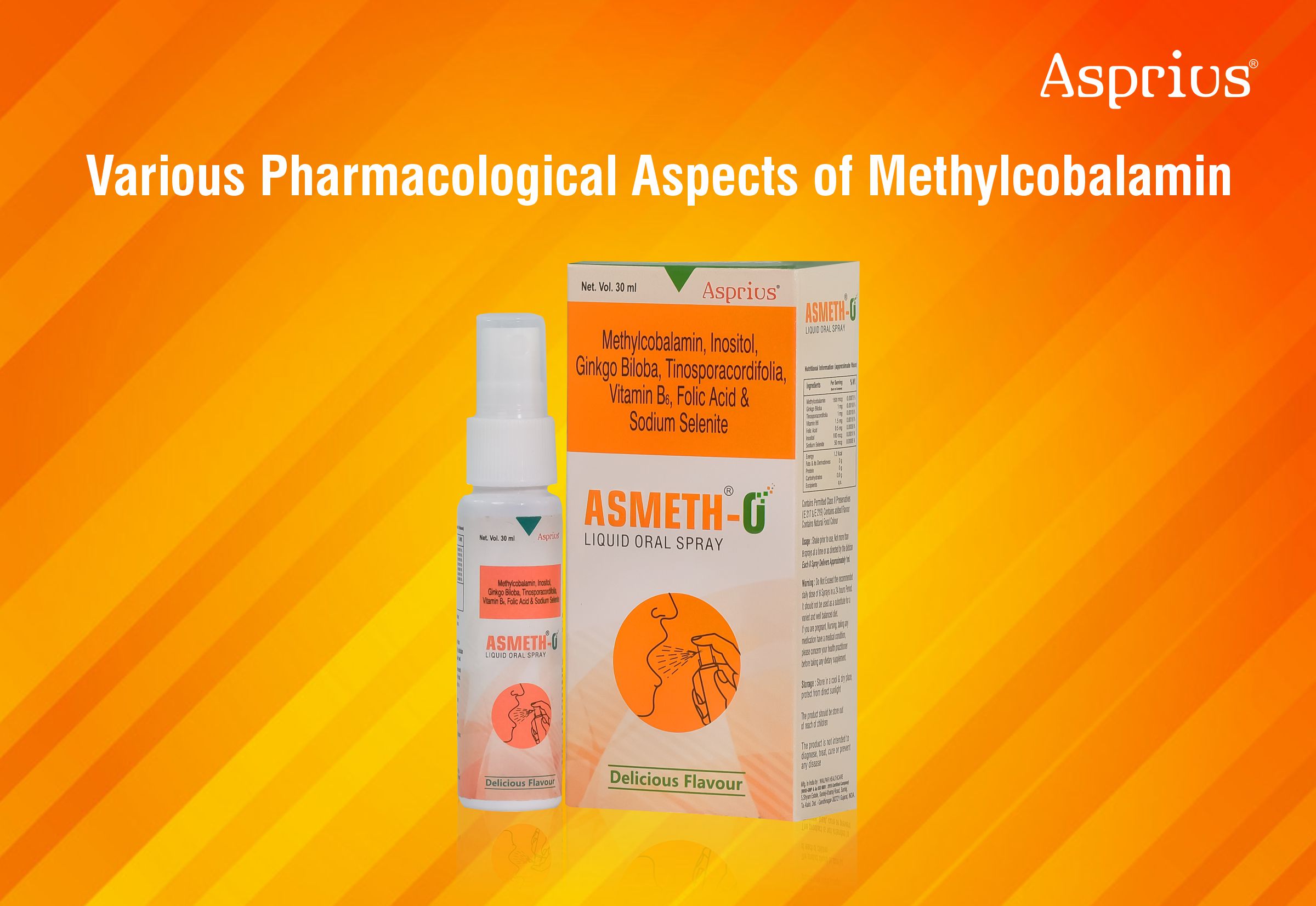
Dr. Sanjay Agrawal
Leading Pharmaceutical consultant and editor-in chief of IJMToday

Omega-3s are unquestionably beneficial to one’s health at all stages of life. There is substantial evidence for their usefulness in maternal and newborn nutrition, childhood and behavioral disorders, adults, depression and cardiovascular illness, and the elderly in terms of cognitive decline. Their advantages transcend the entire age spectrum. Omega-3s are needed at all stages of life, yet it’s not unexpected that we’re dealing with a population with nutritional inadequacies.
Benefits:
Consumption of omega-3 fatty acids may have health implications. Consumption of omega-3 fatty acids in the diet lowers the incidence of age-related eye diseases, including cataracts. Consumption of omega-3 fatty acids also aids in preventing and treating a variety of cardiovascular illnesses. Long-chain omega-3 fatty acids regulate hepatic lipid metabolism in the liver by increasing fatty acid oxidation. It influences different mechanisms that affect endothelial permeability and function. Anti-inflammatory microorganisms are grown in high-EPA and DHA diets, minimizing immune cell damage and inflammation. EPA helps lower the risk of age-related diseases like Alzheimer’s and Parkinson’s.
The Importance of Omega-3 Fatty Acids in Immune Function:
Omega-3’s clinical applications have been explored and debated for many years and they have become such an integral element of a healthy lifestyle that they are no longer optional. Despite this, there are periods of the year when people forget that omega-3 can help maintain the immune system, such as during the winter months.
Omega-3’s clinical applications for immunological diseases are numerous and studied for decades. The scientists analysed research in-depth. They validated the impact of omega-3 fatty acids on immune system function. The effects of omega-3 fatty acids on macrophages, cytokines, neutrophil function, T cells (including T regulatory cells), B cells, dendritic cells, natural killer cells, mast cells, basophils, and eosinophils are all discussed in the review.
Omega-3 fatty acids, as a constituent of cellular membranes, can influence cellular membrane features such as membrane fluidity and complex assembly in lipid rafts. This isn’t shocking information in and of itself. However, omega-3 fatty acids and their derivatives have recently emerged as signalling molecules. This is assumed to be related to changes in cell signalling, cytokines, and pro-inflammatory mediators disrupting pro-inflammatory pathways.
Interestingly, dietary omega-3 fatty acids increase specialized immune functions in specific immune cell types, such as macrophage and neutrophil phagocytosis or T-reg differentiation, implying that omega-3 fatty acids do not behave as general immune suppressors. As a result, ensuring omega-3 saturation is a year-round focus is essential for achieving optimal immune function.
The future of Omega and current conditions:
ISSFAL is an international academic society that represents the majority of researchers in lipids, health, and nutrition. Omega-3 fatty acids are polyunsaturated, and three types are involved in human physiology: alpha-linolenic acid (ALA), which is found in plant oils, eicosapentaenoic acid (EPA), and docosahexaenoic acid (DHA), which are both located in marine oils and are the primary source of omega-3s in the diet.
EPA and DHA have received more good evaluations from the European Food Safety Authority than any other vitamin. Nine health claims have been approved for use so far, including those related to disease prevention and children’s development and health. This is a testament to the well-established advantages associated with EPA and DHA, especially given the stringent regulatory system under which the evaluations were done.
As per research, it is believed that more authorized health claims for omega-3s will be seen in the future, but it will take time as the regulatory climate develops. Not only in Europe, but throughout the world, it differs from place to region. Claims aren’t always solely based on their research, and how that science is interpreted can vary. Getting these claims authorized is a long and challenging process. It is even believed that we will see an increase in the number of pure pharmaceutical applications approved over the next five to ten years. The pharma companies are heavily involved in research in this field, looking into omega-3s as first-line or adjuvant therapies across many therapeutic areas.
Over the last two decades, the omega-3 category has exploded in popularity. The market is worth an estimated $1.3 billion at the ingredient level and is growing globally. Researchers claim that this is due to the items’ solid and well-established science. After many years of research, there are now several well-established claims for these products, and the science is not only well-established, but it is also evolving.
Scientists argues that, unlike other nutrients, omega-3s saw a burst of scientific and academic activity 10 years ago, as well as a surge in commercial items before fading away. The research advances and new findings emerge every year, providing a boost to the market—perhaps by reinforcing the evidence in one area or opening up a new one. As global expendable income rises, people will want to take advantage of these benefits, particularly in Asia; thus, as it is predicted, the market will continue to develop.
With few exceptions, omega-3 insufficiency is a worldwide issue. A few well-studied, well-known tiny populations worldwide consume a lot of dietary fish and have very high omega-3 indices. They are, however, in the minority. We’re seeing their levels drop as their diets alter and adopt a more Western diet.
Fish oil, mostly a by-product, provides the great majority of omega-3s. The amount of fish oil used in supplements is a small percentage of total production, with a considerable rate deemed unsuitable for supplementation. Researchers predict that this will change. Increases in output and differences in processing and recovery techniques will result in a higher proportion of fish oil available for human consumption.
This is the primary source at the moment. In the future, there will be new sources accessible that are more sustainable and have higher environmental credentials, such as algae oils, which are now well established. Despite regulatory concerns, researchers believes that modified crops will be an excellent low-cost supply of omega-3s in the future. These crops will play a role in different nations with varied regulatory restrictions.
Composition:
Each 10 ml contains:
Eicosapentaenoic acid 250 mg
Docosahexaenoic acid 185 mg
Clinical Pharmacology:
Omega -3 –fatty acids have been referred to as essential fatty acids, as they cannot be synthesized in the body and hence have to be supplemented externally.
Though the precise mechanism by which Omega-3 fatty acid act is not exactly elucidated, they are known to have vasodilator, antithrombotic and anti-inflammatory activity, due to their favorable influence on thromboxane A2, prostaglandins PGI3 and PGI2 and leukotrienes LTB4. Omega- 3 fatty acid are also known to achieve increase in fibrinolytic activity and red blood cell deformability, and decrease in blood viscosity and vascular response to catecholamines .Omega-3 fatty acids have hypolipidemic action, especially a reduction in plasma triglycerides. They are known to decrease low density and very low density lipoproteins. Their action on high density lipoproteins is equivocal.
Indications:
Omega-3 fatty acids are indicated in
*Hypertriglyceridemia / hyperlipidemia and associated clinical conditions such as
-Pre-existing coronary artery disease
-Post-myocardial infarction
-Post coronary artery bypasses surgery / revascularization procedures etc.
*They are found to be beneficial in inflammatory and autoimmune disorders e.g. rheumatoid arthritis, psoriasis etc.
Contraindications:
Omega-3 fatty acid is contraindicated in patients with hypersensitivity to the active ingredients.
Warnings, Special Precautions to drug interactions:
Omega-3 fatty acids should be given with caution to patients with coagulation disorders or those receiving anti coagulants or drugs effecting coagulation.
Adverse reactions:
Omega-3 fatty acids are generally well tolerated. However, occasionally it may give rise to nausea, eructation, abdominal bloating etc.
Dosage and Administration:
Adults– One teaspoon twice in a day, or as recommended by the physician.
Children– ½ tea spoon twice a day.




